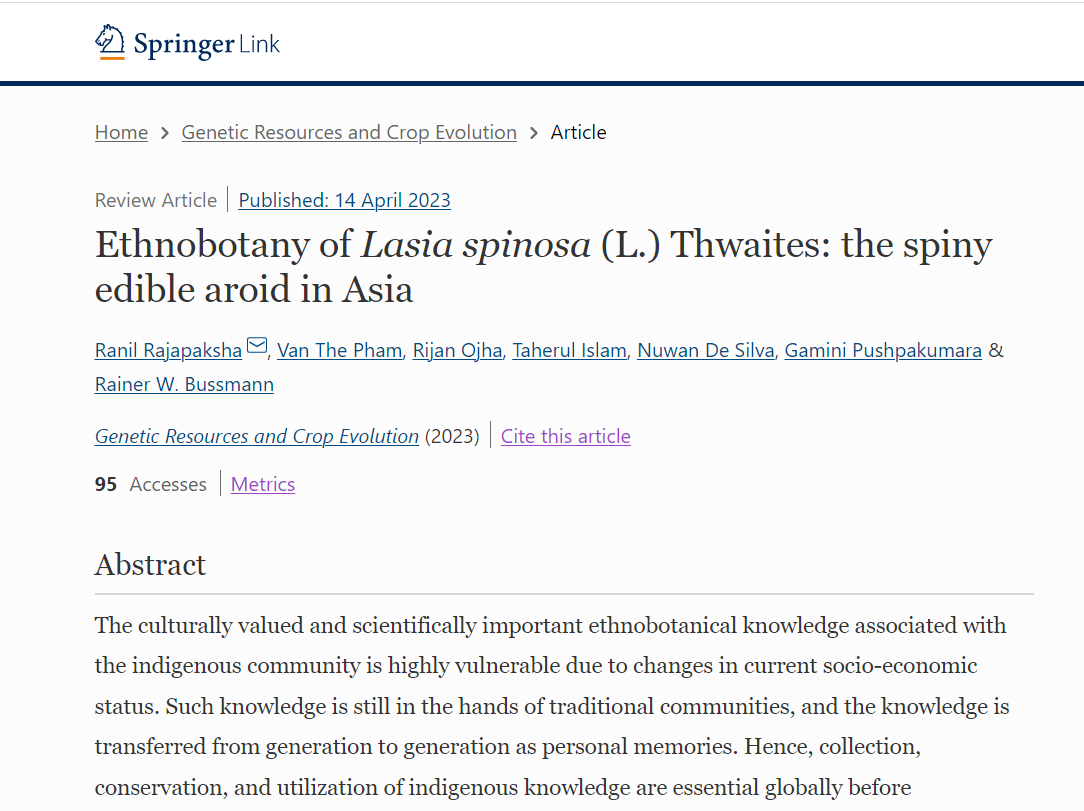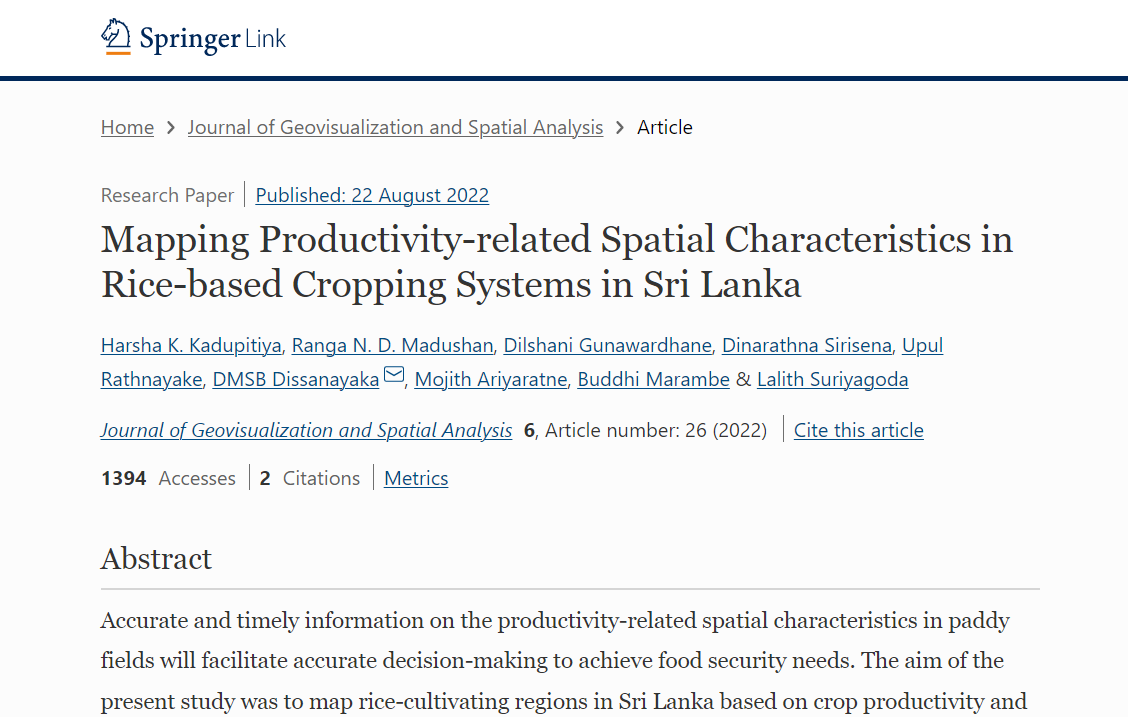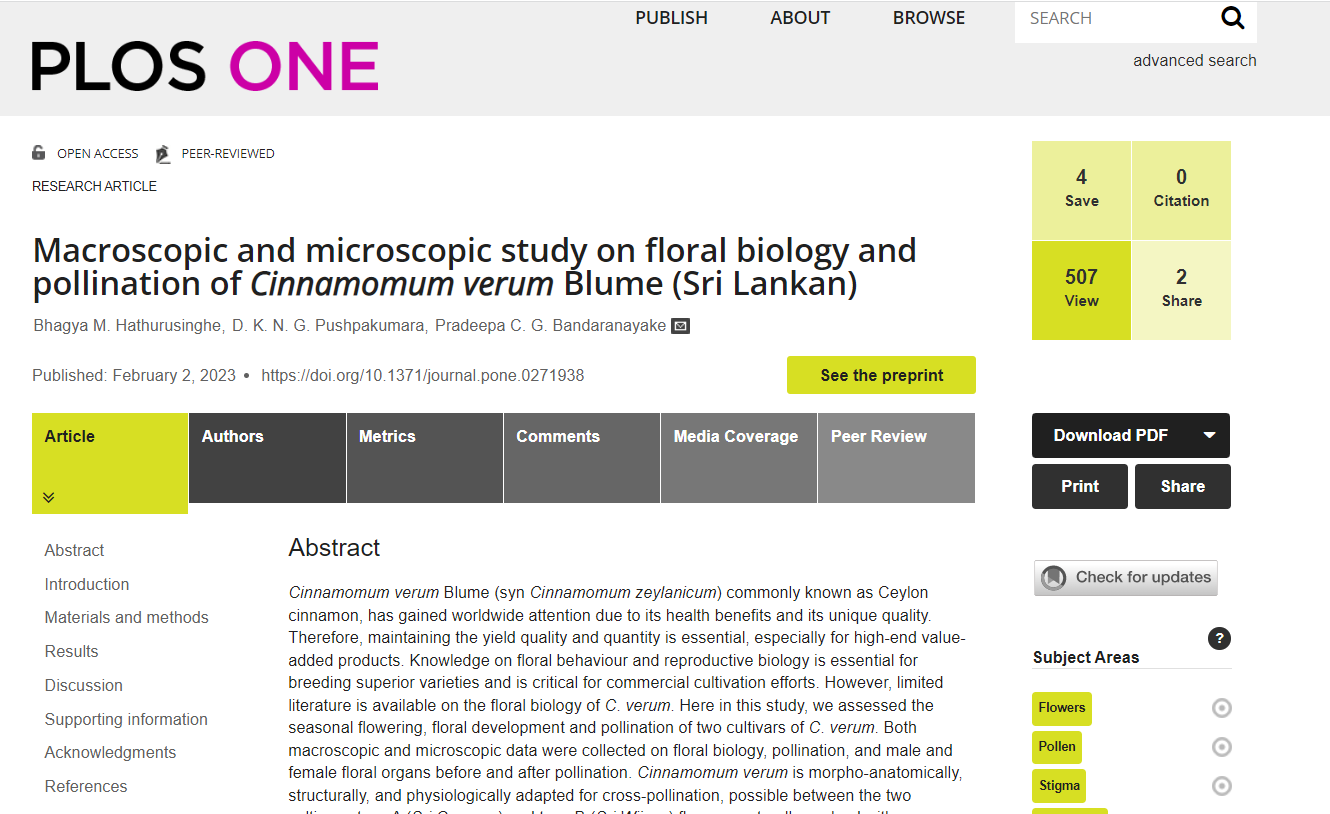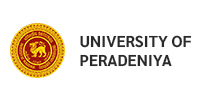
Ethnobotany of Lasia spinosa (L.) Thwaites: the spiny edible aroid in Asia
Rajapaksha, R., Ojha, R., Islam, T., De Silva, N., Pushpakumara, G. and Bussmann, R.W. (2023). Ethnobotany of Lasia spinosa (L.) Thwaites: the spiny edible aroid in Asia. Genetic Resources and Crop Evolution, pp.1-14. doi: 10.1007/s10722-023-01574-z
Abstract
The culturally valued and scientifically important ethnobotanical knowledge associated with the indigenous community is highly vulnerable due to changes in current socio-economic status. Such knowledge is still in the hands of traditional communities, and the knowledge is transferred from generation to generation as personal memories. Hence, collection, conservation, and utilization of indigenous knowledge are essential globally before disappearing from old generations
of local communities. Underutilized food crops are often utilized by under privilege communities in the developing world. The knowledge associated with such species remains with them as personal memories. Lasia spinosa is such neglected edible aroid in Asia with remarkable food and medicinal values. The species is characterized by sharp and pointed spines on rhizome and leaf petiole. Despite its spiny nature, it is popular among some village communities in Asia primarily as a vegetable. This study collected ethnobotanical information on all aspects of L. spinosa across its native range. The authors collected the required ethnobotany information after consultation with key informants from various countries and referring to historical and recent literature. The results consist of information on different names applied, folk classification, food and medicinal uses, and traditional beliefs which can integrate into current knowledge aiming for popularizing L. spinosa as a vegetable among consumers as well as farmers.






